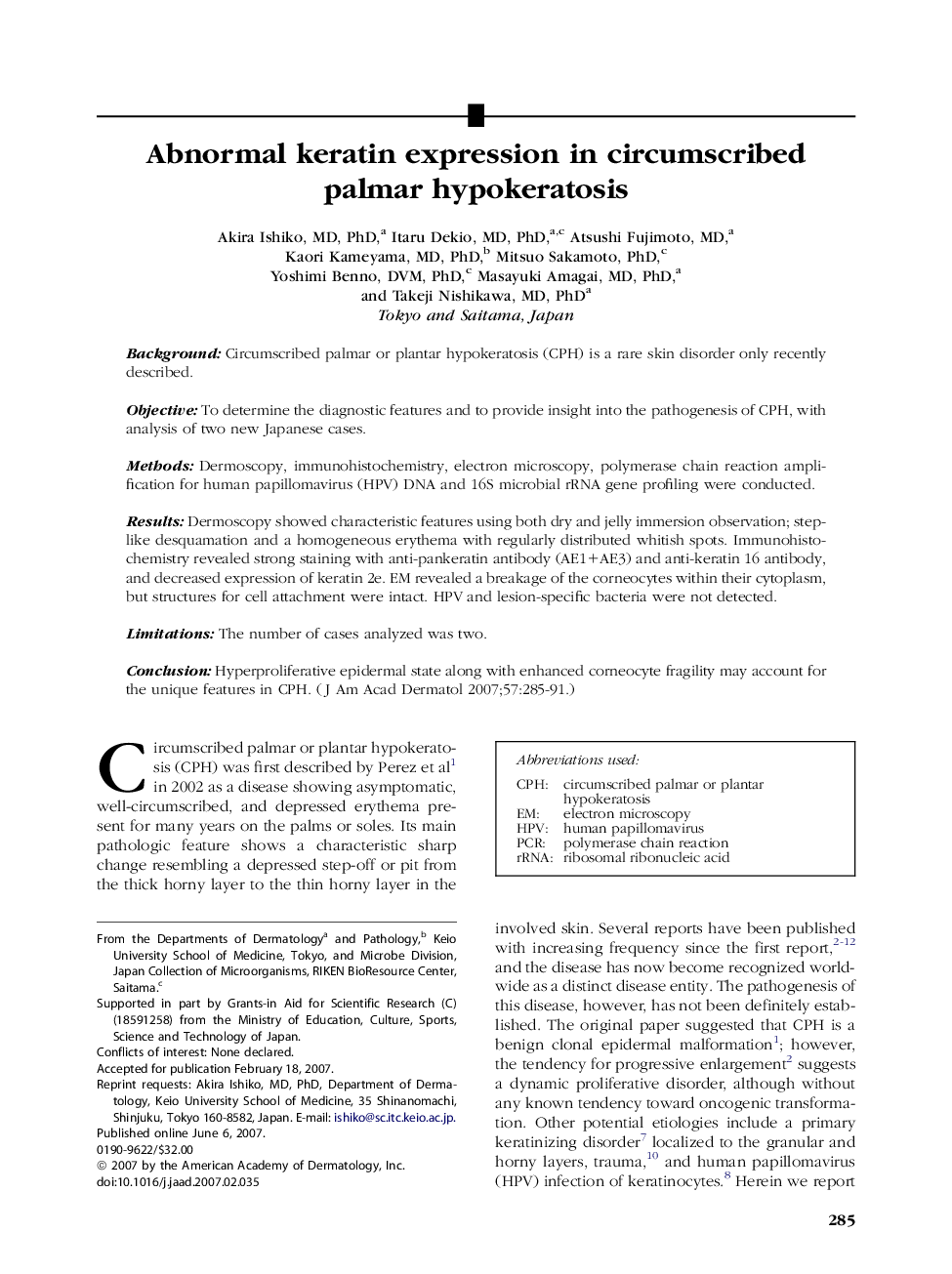| Article ID | Journal | Published Year | Pages | File Type |
|---|---|---|---|---|
| 3211516 | Journal of the American Academy of Dermatology | 2007 | 7 Pages |
BackgroundCircumscribed palmar or plantar hypokeratosis (CPH) is a rare skin disorder only recently described.ObjectiveTo determine the diagnostic features and to provide insight into the pathogenesis of CPH, with analysis of two new Japanese cases.MethodsDermoscopy, immunohistochemistry, electron microscopy, polymerase chain reaction amplification for human papillomavirus (HPV) DNA and 16S microbial rRNA gene profiling were conducted.ResultsDermoscopy showed characteristic features using both dry and jelly immersion observation; step-like desquamation and a homogeneous erythema with regularly distributed whitish spots. Immunohistochemistry revealed strong staining with anti-pankeratin antibody (AE1+AE3) and anti-keratin 16 antibody, and decreased expression of keratin 2e. EM revealed a breakage of the corneocytes within their cytoplasm, but structures for cell attachment were intact. HPV and lesion-specific bacteria were not detected.LimitationsThe number of cases analyzed was two.ConclusionHyperproliferative epidermal state along with enhanced corneocyte fragility may account for the unique features in CPH.
